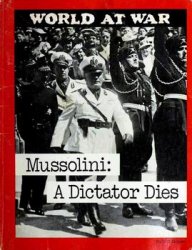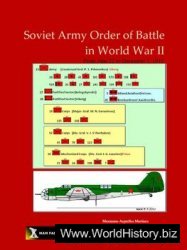Throughout U. S. history children have worked. In preindustrial America, children worked on family farms, as craft apprentices, and in a variety of other jobs. As large-scale manufacturing increasingly came to characterize the economy, several economic, social, and cultural changes led to the abolition and mitigation of some types of child labor. Child labor was not, however, completely abolished.
According to published statistics 18 percent of children aged 10 to 15 were employed in 1900. These figures undoubtedly understate the number of children working. Children played an important role in America’s economy. They could be found working in almost any area of the economy. In the textile industry, for example, 25 percent of the workers were below the age of 15 and the ratio of children to adult workers was the highest of any industry in the United States. In the textile mills, children worked as spinners, constantly walking up and down between the spinning machines, brushing lint from the frames, watching the bobbins for breaks, and making repairs to the threads. The hot humid air that kept the thread from breaking necessitated keeping the windows closed. The atmosphere became filled with lint that the children breathed all day long. Children worked 10 to 12 hour days in such conditions and for low wages.
Children also worked long hours in America’s coal mines. Children officially went to work in bituminous coal mines at the age of 12, began work as coal-breakers at age 14, and went underground at 16. These were the legally established ages, but a great many children went to work at earlier ages because enforcement of the laws was lax. Coal-breakers sorted through the coal after it was mined, leaning over the loads of coal, breathing in coal dust all day long. Underground, the children were subject to all the dangers that made coal mining one of the most dangerous occupations. In fact, children suffered accidents at a rate three times that of adults.
Many other child laborers faced similar dangers working in the seafood canning industry, vegetable and fruit canning, the glass industry, and as newsboys, peddlers, and bootblacks. In the seafood canning industry, children

Young boys selling newspapers (Library of Congress)
As young as five years old helped shuck oysters and peel shrimp. They suffered cuts from the oyster shells and knives. In vegetable and fruit canning, children sometimes worked 80 or 90 hours per week, because the product was perishable and needed to be canned quickly. In addition, the canning industry was not regulated in any state until 1920, because it was classified as agricultural. In the glass industry, child workers were forced to stand or crouch all day, often next to a furnace heated to 2,500 degrees. Cuts and burns were common, in addition to the dangers posed by the atmosphere filled with fumes and dust. Newsboys have taken on a mythical status in American culture as little businessmen. In reality, they worked long hours in a job that exposed them to the dangers of city streets and could be financially ruinous. The newsboys bought all the papers, so the cost of any that remained unsold at the end of the day came out of their pockets.
A number of factors combined in the early 20th century to abolish or regulate child labor. Some of these factors emerged from the reform movements of the Progressive Era while others were due to changes in the economy and technology. During this time, a new conception of childhood developed. Many reformers feared that the tremendous increases in industrialization, immigration, and urbanization threatened the future of America. Concurrently, they believed that America’s children were the future of the nation and needed to be saved from the evils of industrialization.
The reformers pushed through a variety of state laws making education compulsory up to a certain age and restricting the work of children less than 16 years of age in some industries. The coverage of these laws was inconsistent. In 1912, for example, only nine states had laws prohibiting the employment of children under the age of 14 in factories, under 16 in mines, and required the eight-hour workday for children aged 14 to 16. Twenty-two states still permitted children less than 14 years old to work in factories. Thirty allowed boys under 16 years to work in mines, and 31 states permitted children under 16 years of age to work more than eight hours a day. Moreover, many laws were not enforced. In 1912, for example, 23 of the states that had age restrictions for employment required no documented proof of age.
The weakness and inconsistency of the state laws was principally due to opposition on the part of employers and working families. Many working-class families needed the paychecks of their children to survive. They would lie about their children’s ages in order to get them into work. Most of the opposition came, however, from employers who claimed that child labor was good and necessary. These opponents, who were most active in states with industries dependent on child labor, resorted to a variety of arguments in opposing the laws. Working children were a blessing for working families in reducing poverty. By working at an early age, opponents of child labor laws argued, children gained valuable skills that they would use later in their work lives. Schooling was a waste for working-class children, because they could learn all they would ever need to know on the job. Child labor laws restricted the child’s inherent right to work. Opponents of the child labor laws also argued that child labor was a necessity. Workers over the age of 16 were slow, clumsy, or just too big to accomplish some tasks. It took the nimble fingers of a child to accomplish some tasks. Many industrialists claimed that the very existence of many industries depended on child labor. If child labor were outlawed, manufacturers argued, they would not be able to remain competitive in the world economy and might be forced to move to another state that did not have stringent child labor laws.
The poor enforcement of state child labor laws led reformers to seek a federal child labor law. The first federal child labor bill was introduced in 1906. It sought to impose penalties for transporting across state lines goods produced by children less than 14 years of age. The bill was defeated in the House of Representatives. Opposition to the bill came from two sources. First, lawmakers repeated the arguments listed above. Second, there were congressmen who argued that it was an unlawful extension of the federal government’s powers.
Child labor opponents did not rest, and by the mid-1910s, public opinion in most of the country was behind a federal child labor law. In 1915, a bill was introduced in the Congress that would, if passed, outlaw the transport of goods produced by child labor. The bill easily passed the House but never made it to a vote in the Senate, due to the opposition of southern senators whose states relied on child labor. In 1916, opponents of child labor tried again by introducing the Keating-Owen Act, which easily passed both houses of Congress and became law on September 1, 1917. The law banned the employment of children under 14 in factories, workshops, and canneries, and children under 16 in mines and quarries. It also prohibited children under 16 from working more than eight hours a day and between the hours of 7 P. M. and 7 A. M. Numerically, the law barely affected child labor. It freed 150,000 children from work in mines and factories, but 1,850,000 still toiled at home, in fields, and on the streets. Proponents of the new law hoped, however, that it would serve as an example for states to pass their own child labor laws.
The role as a model for local efforts is about all the Keating-Owen Act was ever to accomplish because the Supreme Court ruled it unconstitutional in 1918 in Hammer v. Dagenhart. The case was concocted by the executive committee of the Southern Cotton Manufacturers. A circuit court judge ruled the Keating-Owen Act unconstitutional and granted a permanent injunction against enforcing the law. The Supreme Court ruled, on appeal, that the act was an unwarranted exercise of the federal government’s powers and an invasion of states’ rights.
Child labor law advocates were again successful in passing federal child labor law legislation in 1918, but the Supreme Court ruled the law unconstitutional in 1922. The final effort at banning child labor came in the 1922 campaign to pass a constitutional amendment outlawing child labor. The amendment passed both the House and the Senate, but it failed to win the required two-thirds majority of the states. It was to be the last effort to federally legislate child labor prior to the 1930s.
Despite the failure of federal child labor laws, the number of children working did decrease during the 1910s and 1920s. Some industries that relied on child workers made technological innovations that replaced child workers with machines. Many states passed or strengthened their child labor laws. In 1904, for example, 17 states set some sort of limit on work by children under 14, and by 1929 all states set some limits and 29 outlawed in entirely. In 1904 two states had outlawed children under 16 working more than eight hours a day. By 1929, 36 states had such laws. Thus, the battle against child labor had succeeded to an extent, but it was not until the economic collapse of the Great Depression and the post-World War II affluence that economic considerations minimized the role that child labor plays in the United States economy.
Further reading: Walter Trattner, Crusade for the Children: A History of the National Child Labor Committee and Child Labor Reform in America (Chicago: Quadrangle Books, 1970).
—Michael Hartman




 World History
World History









